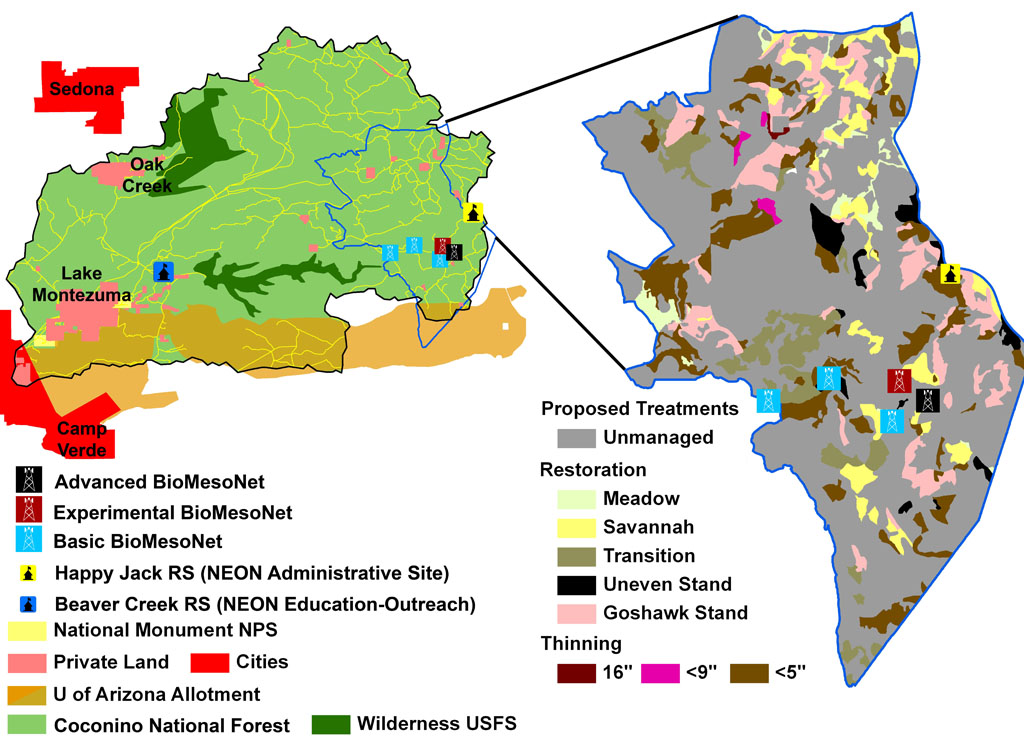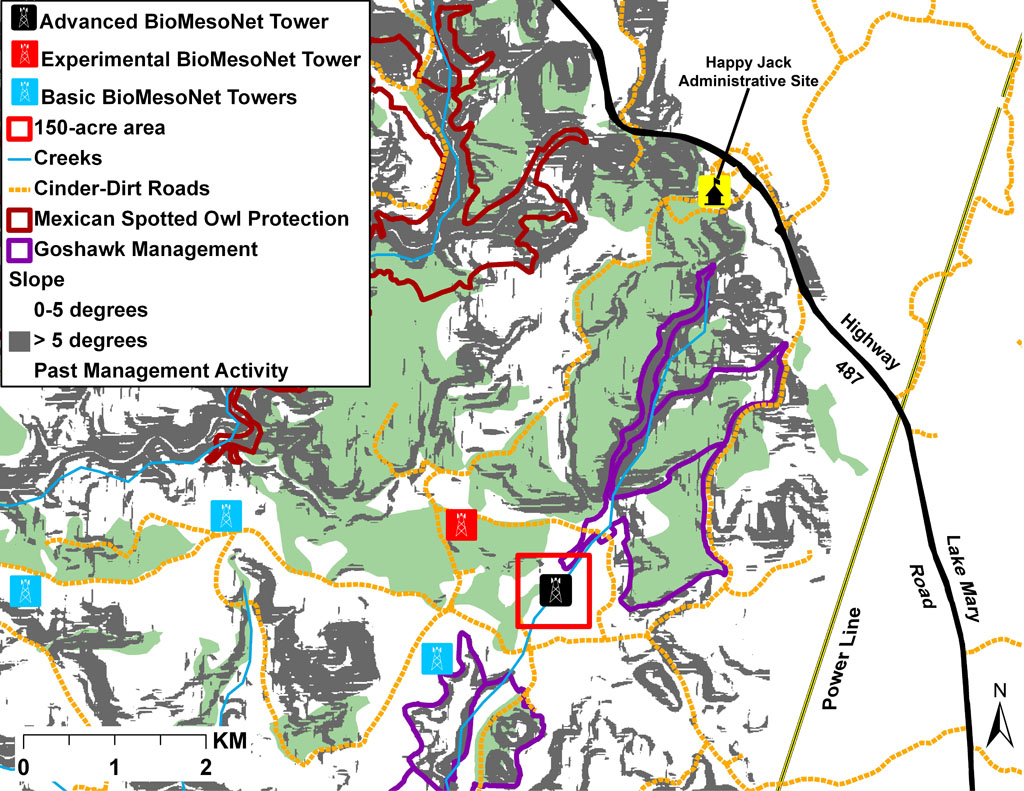The types
of infrastructure and activities anticipated for NEON deployment
(flux towers, research staff access, experiments) are being
incorporated into an ongoing NEPA Environmental Assessment
for the USFS Beaver Creek Watershed Management Plan. We have
used information from this planning process to avoid threatened
and endangered species habitat areas and to avoid intensive
management and timber resource use areas (
Figures 2 & 3 ).
Because anticipated NEON infrastructure needs are being considered
in the current NEPA Environmental Assessment, NEPA compliance
for deployment should not be problematic. We have avoided
areas of Mexican spotted owl (MSO) habitat (threatened species)
by large margins in our selection of a suitable location
for the proposed core site. One of the primary concerns for negatively impacting MSO is human-generated
noise disturbance that could potentially disrupt reproductive success. A
study conducted by Delaney, et al. (1999) in the Lincoln National Forest in
south central New Mexico evaluated the effects of helicopter and chainsaw
noise on MSO. The study reported no spotted owl flushes when noise stimuli
were >105 m away and that manipulated and non-manipulated nest sites did not
differ in reproductive success or the number of young fledged. All of the
proposed BioMesoNet sites would be located well beyond the 105m threshold (at
> 500 m) from MSO Protected Activity Centers.
Treatment areas for promoting
improved goshawk habitat (species of concern, not threatened
or endangered) are nearby, but are not included in the proposed
core site or experimental set-aside. There are no known archeological
concerns on the site. The power line extension would follow
an existing road to reduce environmental/archeological impacts.
The one significant, and only known, wetland on the site
is the seasonal creek traversing the site. The site access
road does not cross this creek; hence it will be easy to
avoid any disturbance to wetlands during infrastructure construction.
The main visual concern is anticipated to be with lighting.
Hence, exterior, night-time lighting will be minimized and
shielded in accordance with "dark-skies" recommendations.
A
NEPA
Environmental Assessment was also recently completed by the USFS with the Lowell Observatory for the Happy Jack Ranger Station and the Discovery Channel Telescope construction on a nearby hill. This Ranger Station is the proposed NEON Administrative Site and thus it is worth noting that no environmental or historical issues were found to prevent the development of scientific and related support infrastructure at these sites.

 Figure 2. Figure 3.
Figure 2. Figure 3. 



